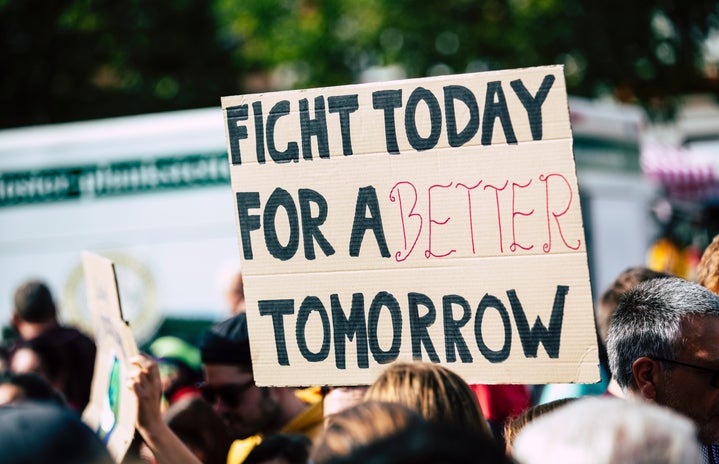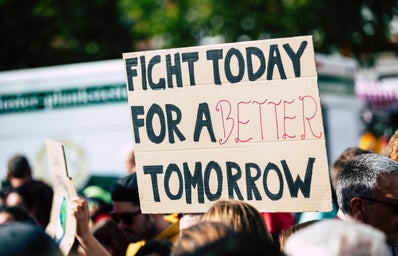The latter half of the 20th century in Britain saw various alternative groups emerge within its society. They existed and socialised outside the mainstream, shared strong politics and were often recognisable through their use of fashion, as well as the music and films they engaged with. As they’ve developed alongside social media into the 21st century, some of the meaning and value associated with these groups is starting to get lost, leading to what I would argue could be described as a process of depoliticisation of these alternative subcultures.
Alternative subcultures have often emerged as a reaction against the mainstream current of society. Although usually recognised through their use of fashion and personal style, it has most often been their politics of resistance and anti-system attitudes that have characterised them as distinct groups within a social context. In Western societies, strong anti-capitalist and anti-consumerist foundations are observed and lead to a powerful shared ethos between individuals. Sourcing their clothing second-hand or by DIY-ing has always been a valuable tool in maintaining their resistance to consumerism. These groups are recognisable through their bold use of style and fashion: From the punks, who emerged in mid-70s Britain and were characterised by strong anti-establishment views, to the hippies – descendants of the Beats generation emerging in 1960s USA rebelling against the strict sexual norms of the time and in support of anti-war movements. However, the aesthetics associated with these subcultures have always been symbolic rather than the substance of the group’s activities.
When evaluating the development of such groups, it is safe to say that the relationship between these alternative subcultures and the mainstream has been fundamentally altered as mass social media has expanded along with globalised commercialisation of the fashion industry. This increased and superficial scale of media consumption leads to nuance being lost. A 15-second instagram reel is enough time to allow viewers to decide whether they appreciate the visual impact of alternative styles but is ill suited to accurately convey the importance of the politics and resistance within these movements. Fast fashion and globalisation goes hand in hand with this by allowing consumers to easily access these aesthetics without ever needing to go further than that initial short-form video. This leads to the commodification and depoliticisation of these subcultures and movements as a whole.
Some will say this mirrors a wider depoliticisation of contemporary society. The constant stream of content available has desensitised us to the issues that surround us globally. We think that by reposting and ‘raising awareness’ this will lead to change but do not see the need for further action. Growing gaps and issues in various aspects of our society, such as the cost of living crisis at home, and a deteriorating international situation, with the worsening of both the Russo-Ukraine and the Arab-Israeli conflict, amongst other things, can also result in a rampant sense of hopelessness. Many people do not vote because they do not believe it will change anything, reflecting a growing ‘nothing I can do’ attitude amongst people.
But why is the depoliticisation of alternative subcultures bad? Shouldn’t people just be allowed to wear the clothes they like and be done with it? I would argue that watering down anything to simply its superficial presentation whilst removing all substance is almost always something to take issue with. In this case, it hinders the groups involved in radical political action by wearing down their shared ethos and limits the scope of what they are trying to achieve. By reducing these groups to their chosen fashion and aesthetics, one vastly reduces the visibility of their politics and resistance, therefore limiting their impact. Furthermore, much of these movements and groups have origins within oppressed groups, such as the working class. Removing their politics, as well as choosing to engage with fast fashion in order to participate can lead to directly harming these groups through labour conditions, the worsening of climate change, and/or the constant increase in mass production and consumerism. This is problematic as it turns these subcultures against those who originated them. Commodifying these aesthetics, and pushing consumerist tendencies, ends up doing the exact thing that many of these groups, such as the punks with their symbolic use of DIY, are resisting against.
Thus follows a need to be stricter when allowing people to use and identify with these labels. Greater education is needed on their politics and surrounding movements before one ‘signs up’ to alternative groups, and this is key if we want to halt the process of stripping subcultures void of any meaning past their aesthetic value. In a world where things seem to be going increasingly wrong, we need groups such as the punks and the goths and the hippies to bring visibility to the worsening issue of capitalism and increased consumerism. Radical politics cannot and should not be kept separate from alternative subcultures.


